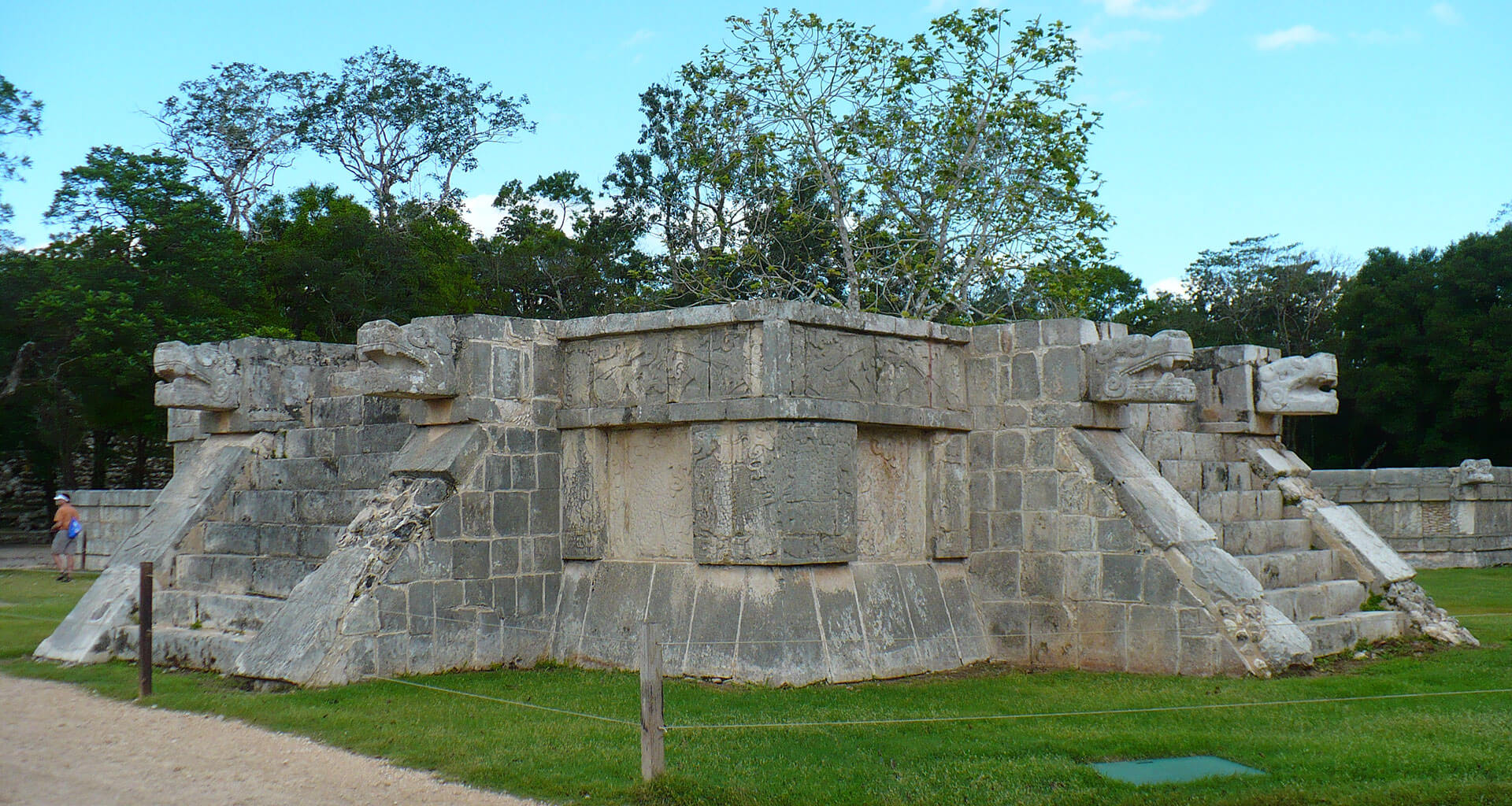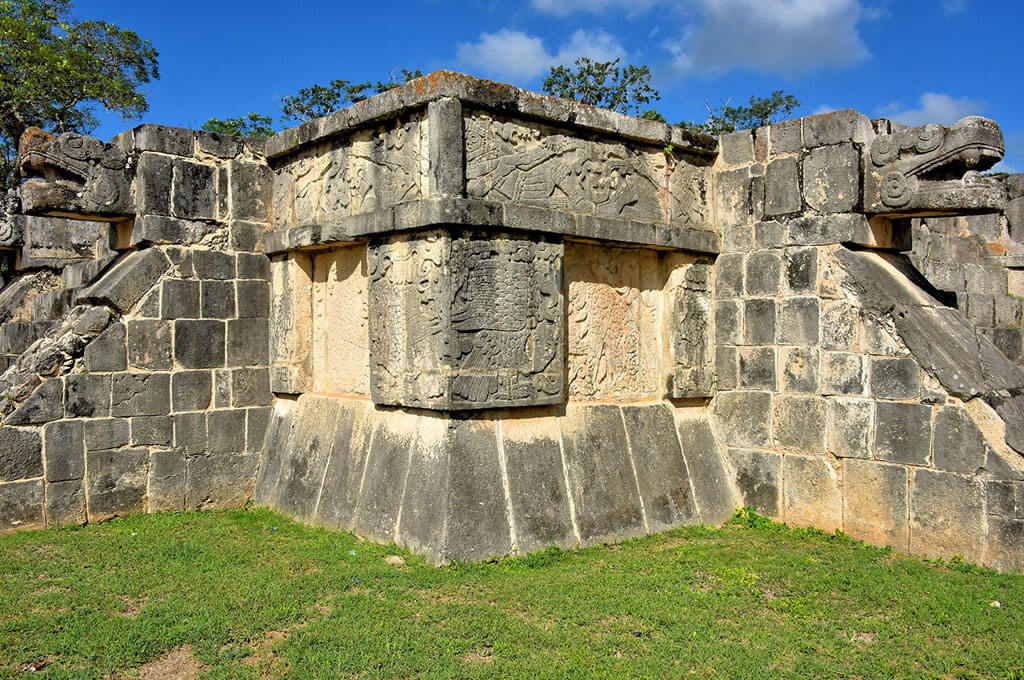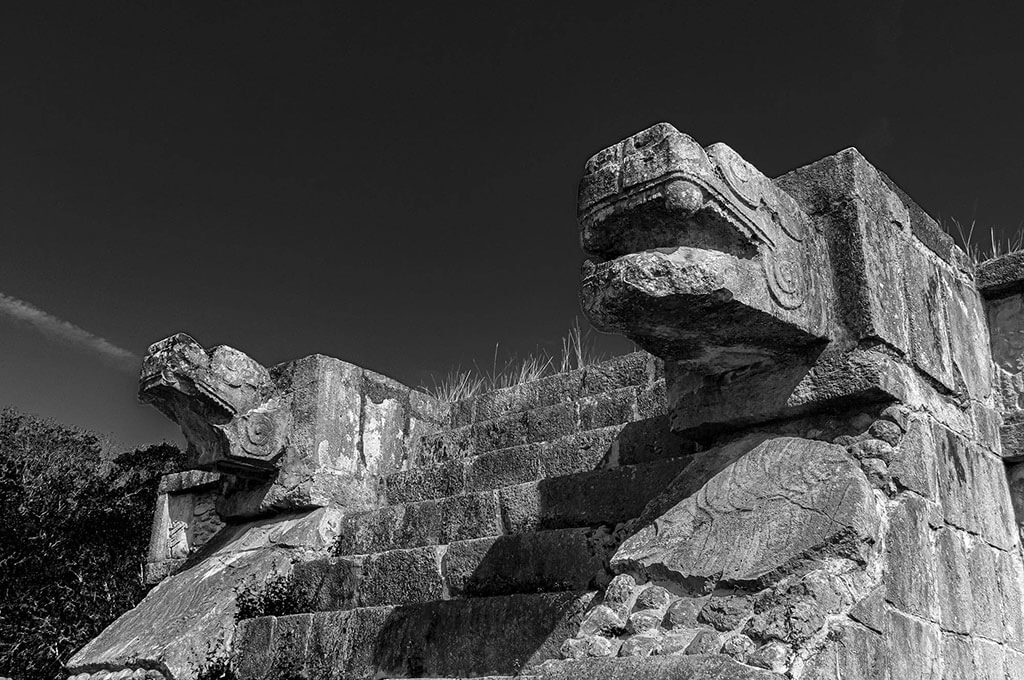
Located on the great Plaza, the Platform of the Eagles sits between the Temple of the Skulls and the Temple of Venus. Built between 900 and 1200 AD, in the Maya-Toltec era. Just like the Castillo and Venus Platform, it has a staircase on each of the four sides leading to the top of the platform. The balustrades (stair rail) are topped with an ascending plumed serpent – the serpent God Kukulcán. On the walls of the structure are prostrate human figures. Below them are Eagles and Jaguars gruesomely grasping human hearts.
The platform was likely used for religious and ceremonial purposes with a special emphasis about military superiority.
This is a small platform with four stairways. On the base of the structure there is a vertical wall with raised panels displaying images which relate to the course of the sun across the sky during the day and its descent to the underworld at night, as “Sun of the Earth”. The eagles and jaguars symbolize the warriors who capture victims to feed the sun god.


The figures of jaguars and eagles devouring hearts are said to represent the warriors who were responsible for obtaining victims to sacrifice for the gods.
The "Eagle Knights" were archers who attacked the enemy before all other soldiers fought hand to hand. The aggressive eagles which sculpted on the walls of the platform are the symbol of these elite vip group of archers who stood out on the battlefield because they wore clothing of feathers from the bird for which they were named.
The "Jaguar Knights" were believed to be the army fiercest members, modeled after those found elsewhere in the Central Mexico. They fought hand to hand, with wooden clubs tipped with obsidian knives. They covered themselves with armor made of jaguar skins and also helmets of jaguar heads. The figures of jaguars represented the soldiers who were often charged with obtaining prisoners for sacrifice to the Gods of city.